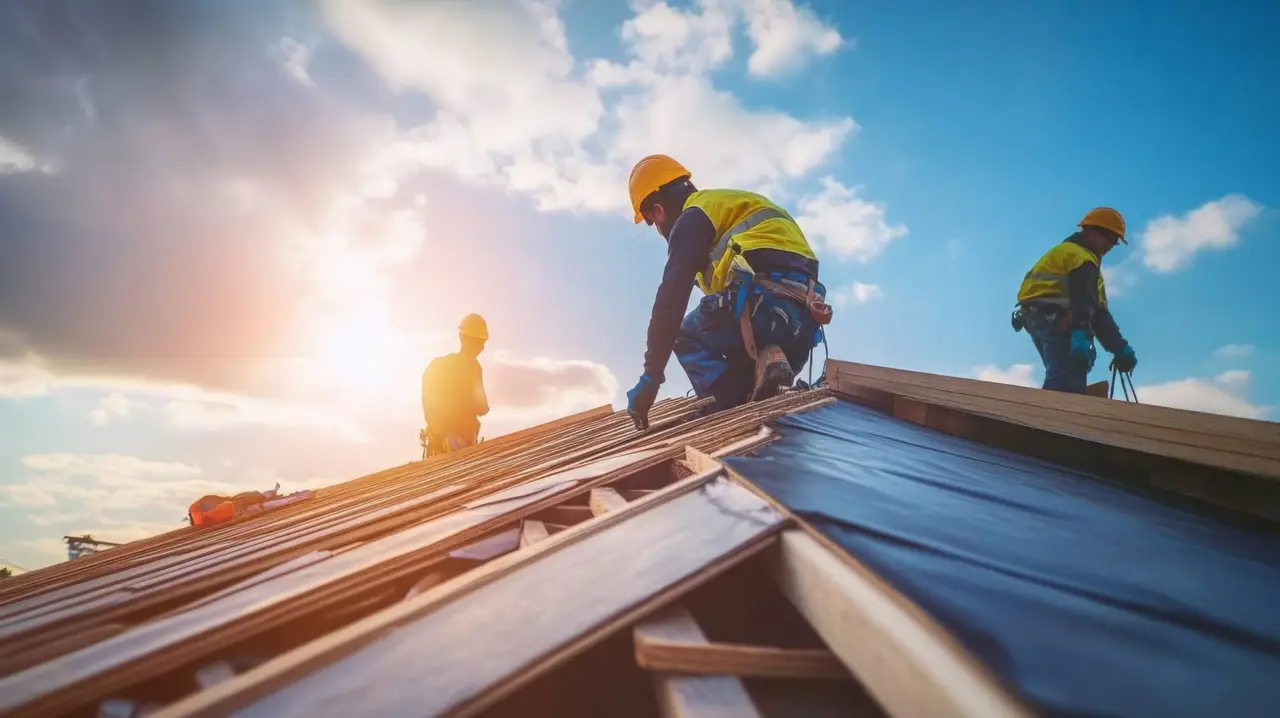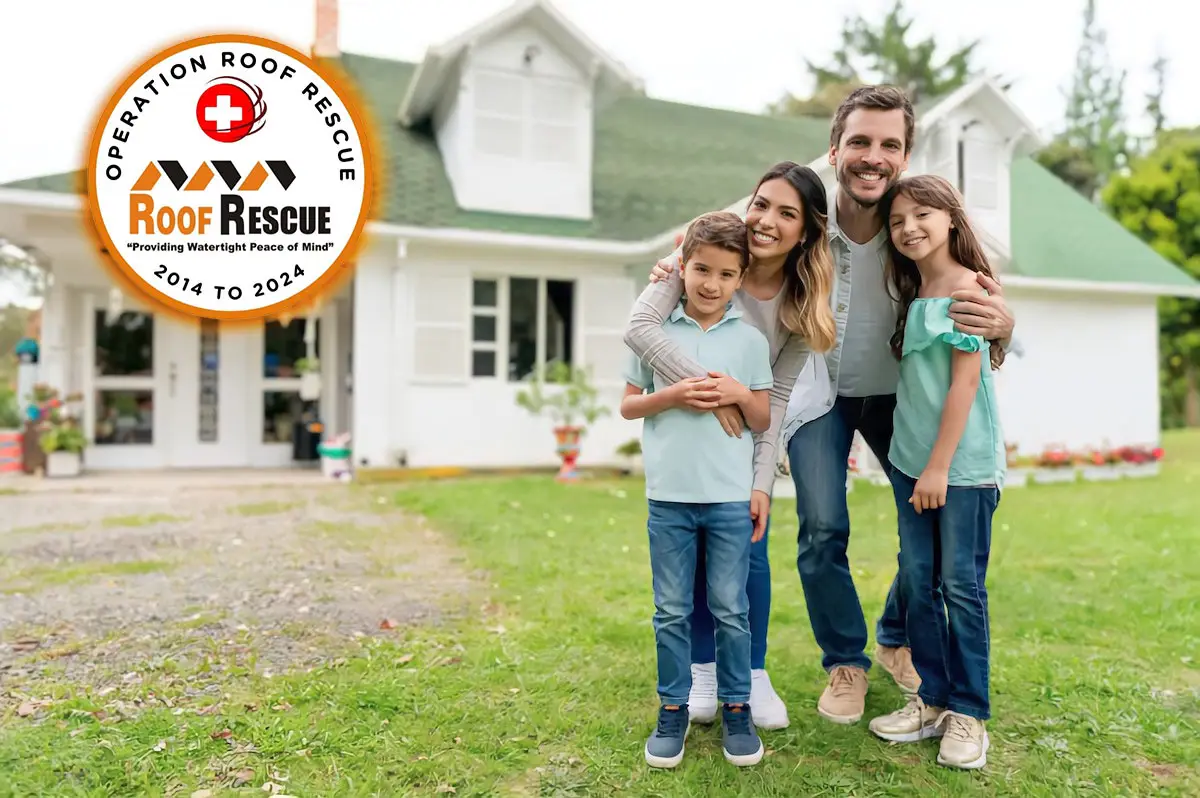Choosing durable roof materials determines the longevity of your roof. A longer-lasting roof requires less frequent replacement, saving money, time, and effort over the next 20 to 80 years. When investing in a new roof, choosing the right material can save homeowners thousands in repairs and replacement.
Asphalt shingle roofs are the most common roofing type, lasting 15 to 30 years. Slate and clay tile roofs can last 50-100 years but require regular replacement of broken tiles. Traditional wood shakes can last up to 40 years, and modern metal roofs can last up to 70. Of course, climate and architectural design also play a role and green roof preparations can make any roof more sustainable.
We can help you determine which roof materials will last the longest on your home and how to get the best return on investment (ROI) for your new roofing design.
Why Roof Longevity Matters
Why aim for a roof with great longevity? A longer-lasting roof can reduce the need for frequent repairs and increase the time between replacements. This can save homeowners a great deal of money in the long run.
A durable roof with a long lifespan can also enhance a home’s resale value, as buyers often prioritize properties with low maintenance and long-lasting features. You may also consider the environmental impacts. Long-lasting materials reduce waste and increase your home’s sustainability.
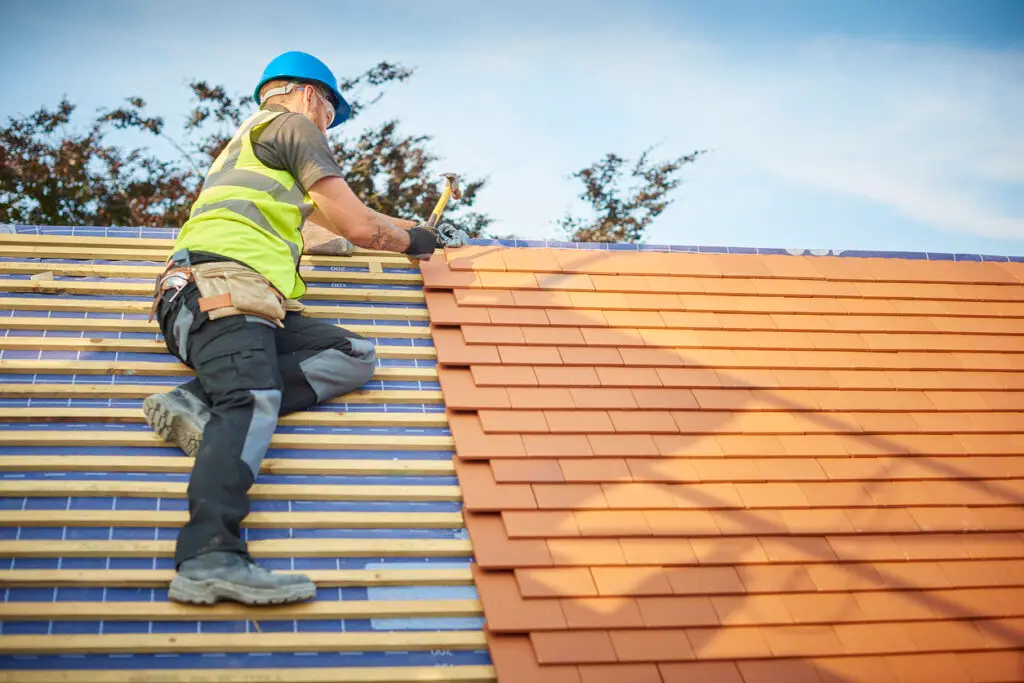
Roof Materials With the Longest Lifespans
Let’s explore the roof materials that typically offer the longest lifespans. Remember that the longevity of each material can vary based on the local climate and the homeowner’s maintenance routine.
Slate Roofing (Lifespan: 75-100+ Years)
Slate is a natural dark gray stone known for its incredible durability and classic stately appearance. It is resistant to fire, water, and extreme weather, and can last 75 to over 100 years if properly maintained. However, slate is one of the heaviest and most expensive roof materials, requiring a strong roof structure and specialized installation. You will also need to have slate tiles replaced when they break.
Metal Roofing (Lifespan: 40-70+ Years)
Metal roofing uses sheets of highly durable metals like steel, aluminum, or copper. They can last 40 to over 70 years when well-maintained, and are resistant to fire and strong winds, with no shingles to blow away. When coated in protective finishes, they are also resistant to corrosion and all manner of moisture. However, metal roofs tend to be a bit noisier during rainfall and hail and require patching when damaged. They also have a higher upfront cost compared to asphalt.
Clay or Concrete Tiles (Lifespan: 50-100+ Years)
Clay tiles are classic roof materials now paired with concrete tiles as a similar option. They offer a classic Mediterranean aesthetic and are commonly used in hot climates because they do not trap heat. Clay and concrete tile roofs can last 50 to over 100 years when maintained and are resistant to fire, insects, and rot, making them a highly durable option.
Of course, tiles are heavier and come at a higher cost. They also need extra structural support for installation, and like slate, will need to be replaced when broken.
Wood Shakes (Lifespan: 30-40+ Years)
Wood shake is one of the most traditional roof materials made of thin slats of wood like cedar or pine. Shakes can typically last between 30 and 40 years. They add a timeless character to a home while adding unique insulating properties. However, they require regular maintenance to counteract their susceptibility to rot, mold, and insect damage. Wood shakes are also not ideal in regions prone to either moisture or fire and should be treated with a finish coating.
Asphalt Shingles (Lifespan: 15-30+ Years)
Asphalt composite shingles are the most common type of roof materials. They are affordable, colorfully diverse, and easy to install and repair. They set the standard for residential roofing, but are not the longest-lasting. Older asphalt shingles last about 15 years, while modern compositions can last up to 30 years and above. They offer an affordable option and a range of grades to set your price and durability, including basic, architectural, and premium shingles. Higher-quality shingles last longer and resist the elements more effectively.
While asphalt shingles are affordable, they don’t last as long as other materials and are more prone to damage in extreme weather.
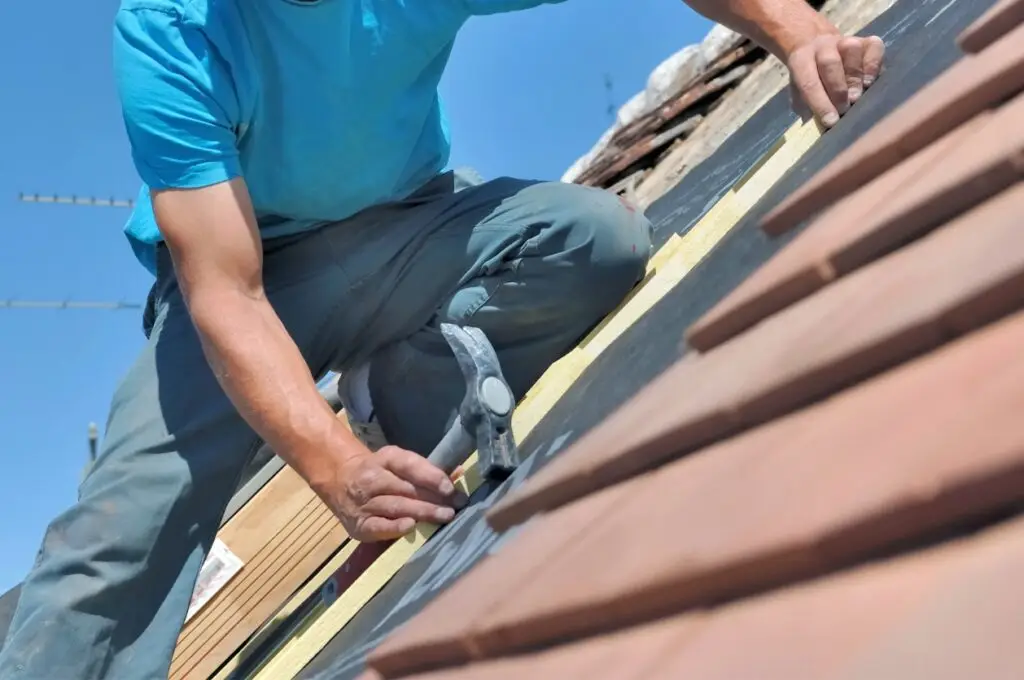
Factors That Impact the Longevity of Roof Materials
Roofing material plays a major role in your roof’s lifespan, but other factors can also contribute to the overall durability and longevity of your roof.
Climate and Weather Conditions
Each material performs differently in various climates and weather conditions.
- Metal roofs are ideal in fire-prone areas, but take the most damage from hail.
- Slate roofs are best suited to regions with harsh weather.
- Clay tiles perform best in regions with hot temperatures and calm weather
It’s important to choose a roofing material that is strong against your local weather conditions, such as high winds, heavy snow, or intense sun.
Installation Quality
Skilled installation can make a profound impact on your roof’s longevity. A proper support structure, ventilation, securing methods, and installation techniques can help to maximize the longevity of any roofing material. A poorly installed roof is also more likely to require repairs or even replacement sooner than expected. Homeowners should hire only certified and skilled roofers with experience in the selected material to ensure they maximize the roof’s lifespan.
Roof Maintenance
Don’t forget your roof’s regular maintenance. Regular cleaning, inspections, and prompt minor repairs help extend the lifespan of even the most durable roof materials. These steps significantly extend the lifespan of a roof, regardless of the chosen material. Regular inspections and light repairs are essential to prevent minor issues – which occur with any roof – from turning into major problems.
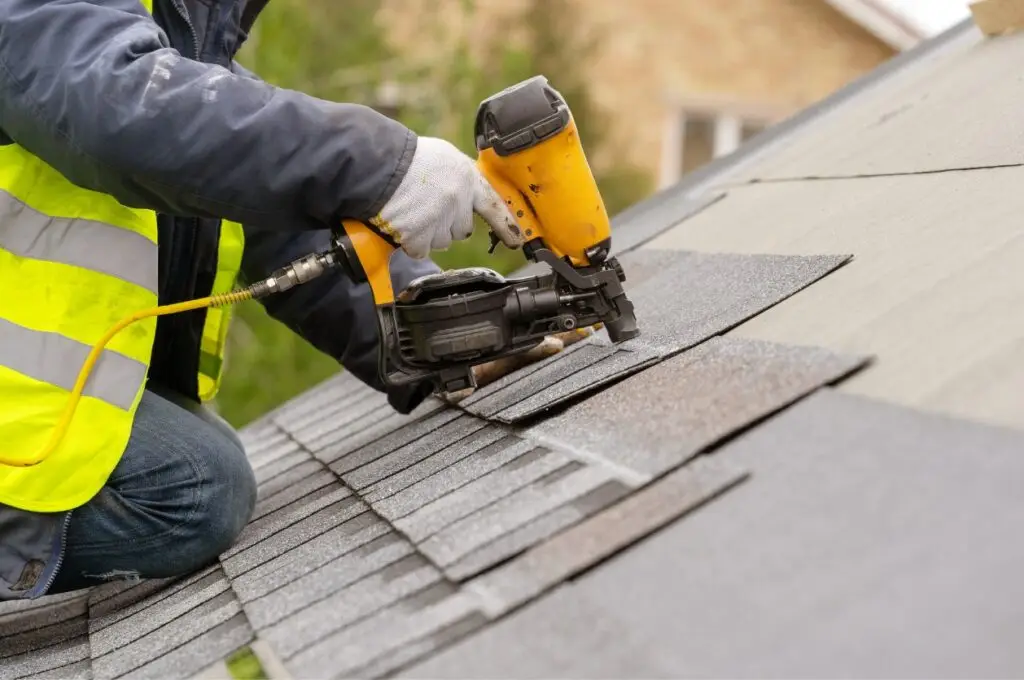
Comparing Lifespan With Other Key Considerations
Lastly, consider the balance between the roof materials’ longevity and other factors that might sway your decision.
Cost
Balance the upfront cost of a roofing material compared to their total years of life. You can determine the true value by dividing the total cost by the average lifespan to get the cost per year compared to lower-cost and shorter-lived materials. Longer-lasting roof materials often have a higher price tag, but the value may balance out. Weigh your budget against the potential savings of a longer-lasting roof to make an informed decision.
Aesthetic Preferences
While longevity is crucial, the aesthetic quality of the roof’s material also influences your home’s value. For example, slate provides a timeless appearance, while metal provides a more modernized style. Choose a material that balances durability with the desired curb appeal of your home.
Environmental Impact
Sustainability is also an important consideration. The environmental impact of your roof can make a difference. Whether a roof is made from sustainable or recyclable materials, the debris created by installation, and how often a roof needs to be replaced (creating waste) all play a part. Environmentally conscious homeowners can choose roof materials with longer lifespans to reduce waste.
Finding Your Ideal Long-Lasting Roof Materials
Choosing a long-lasting roof material is a smart investment for any homeowner. You can minimize repairs and extend the time between roof replacements, resulting in fewer repairs overall. Consider the impact of climate, budget, and aesthetics as you weigh the different roof materials and their potential lifespans.
To identify the best roofing material for your home in terms of weather resistance, longevity, and aesthetic appeal, you can consult with the roofing professionals at Roof Rescue. We will help you calculate the unique needs of your home and your personal preferences. Contact us today to learn more.
Mark Franklin, owner of Roof Rescue in Idaho Falls, Idaho, has been a trusted name in roofing since 2014. Serving Idaho, Montana, Wyoming, and Utah, Roof Rescue specializes in commercial and residential roof replacement and installation. Recognized for community initiatives like the “Operation Roof Rescue” program, which provides free roofs to local heroes, Mark combines professionalism with a passion for giving back. With 16 years of industry experience, an A+ Better Business Bureau rating, and glowing customer reviews, Mark’s leadership embodies quality and community-focused service.

